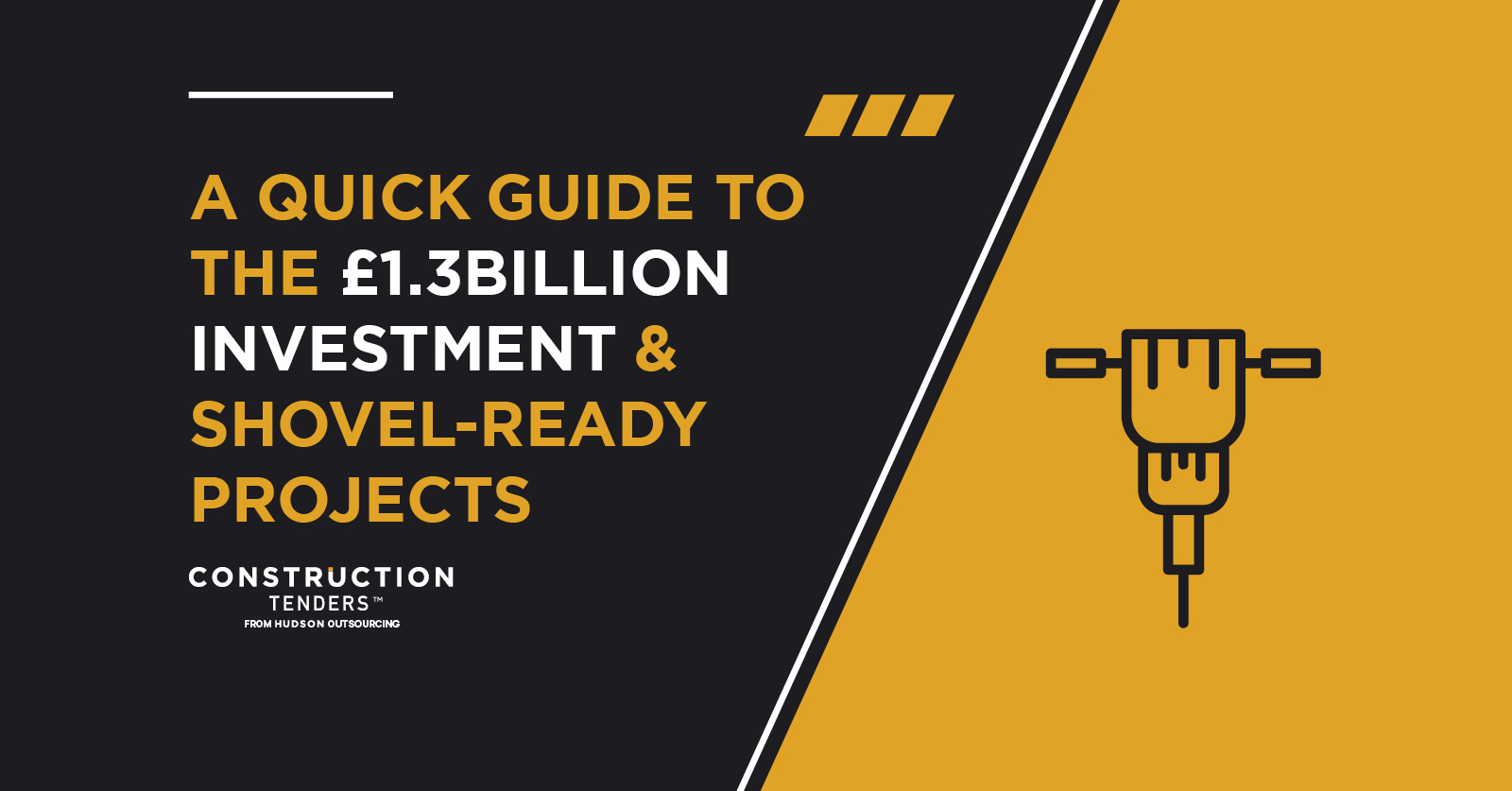How to Focus Your Commercial Building Tender on What Matters
What is a commercial building tender?
Commercial building tenders are the most common way in which buyers find suppliers to construct buildings for commercial purposes. The term covers a wide range of building projects that are, quite often, large contracts. For instance, a commercial building tender could seek suppliers to construct office towers, warehouses, or shopping centres.
Put simply, a buyer will go to the external market with a commercial building tender. This could be part of a specification for building a new leisure centre. This buyer then collects, analyses and nominate bids from suppliers, and the most economically advantageous tender (MEAT) wins.
What are the best practices when writing commercial building tenders?
Writing commercial building tenders requires a lot of industry-specific knowledge and skill. Large construction contracts, like commercial building tenders, often involve multiple suppliers operating collaboratively under a framework agreement. Watch our free Tender VLE masterclass on Framework Agreements for more information on how this works. Commercial building work itself is highly technical and costly, therefore the tender needs to be exhaustive. In order to respond effectively to the tender specifications, you need in-depth knowledge of the regulations and legislative examples.
Read our advice on the best practices for general bid writing and creating a water-tight argument for your business. We also have a successful bid writing division, Hudson Succeed. If your business needs to outsource the writing and submission of technical tenders, or simply needs advice, get in touch.
This blog will focus on, arguably, the most important aspect of your commercial building tender. This is its social value, i.e. how you consider the wider community impact of the project. We’ll explain why demonstrating social value can make a BIG difference in whether or not you win a bid.
Public opinion on commercial building tenders
Despite the breadth of commercial building, it is a less recognised sub-sector of construction.
The Chartered Institute of Building (CIOB) reported that the British public underestimates the importance of commercial building tenders. When quizzed on what they think is the most important element of the construction industry, the public emphasised roadwork. Roadwork is the defining sub-sector of construction in the public imagination. Significantly, roadwork also came top when the public was asked where the government should spend more money in construction.
However, roadwork accounts for a relatively small proportion of activity compared to commercial building, educational building and leisure construction projects.
Why does public perception matter?
Well, firstly, it’s important that the construction industry – and those who make policy decisions – take public opinion into consideration. To do this more effectively, they need to know where the public lacks understanding of construction and correct these misconceptions. Otherwise, much-needed budgets for commercial building tenders could be slashed due to misconception. In short – more budget for commercial building tenders, please, not roadworks!
Also, commercial builds can often get a negative reception when they are made public. A commercial building tender for a large warehouse nearby could upset local people if they’re worried about the natural landscape. Opinions could change, however, if the build provided social value by hiring locally and offering work experience to young people.
An example of this is seen as plans to build a 12,500-capacity Gateshead Arena on Newcastle-upon-Tyne’s quayside has caused pushback. Some residents have complained over the obtrusive design of a hotel proposed in the plan. The project, however, is planning to work with local partners and add over 1,000 jobs to the regional economy. Ultimately, this will make the area more attractive to residents, visitors and investors.
Public tensions make it especially important to emphasise positive social value in your commercial building tenders. Getting the local community on your side is a great way to increase funding and your chances of winning.
Where exactly can social value come into a commercial building tender?
Social value has become a much more prominent aspect of commercial building tenders in recent years.
Demonstrating social value in construction bids is essentially detailing the contribution your work will make to society and local communities. This can be boiled down to the following:
- reducing inequality;
- promoting wellbeing;
- decreasing the impact on the environment.
With each aspect of social value, there’s a variety of ways to prove how you can positively impact the local community. For example, will you employ local people? Great. This can demonstrate social value in each of the following ways:
- It could create fiscal saving for the Government if these people were previously unemployed.
- You could improve these people’s livelihoods and future prospects.
- It could increase public health by reducing dependence on public transport during the COVID-19 pandemic and national lockdowns.
- It could positively impact local education if you have apprentices in your supply chain.
- You could boost local trade if your procurement process prioritises local suppliers.
See? You can showcase social value in a multitude of ways in commercial building tenders, once you know what to consider!
Make sure to always use figures to back up your claims. How many local people will you employ, in how many miles radius of the site? It’s important to be realistic and specific with any assertions in your commercial building tender. Watch our free Tender VLE masterclass, Evidence is Key, for more insight on adding evidence to your tender.
Why does social value matter more in commercial building tenders?
It’s particularly beneficial to consider social value when pitching for a commercial building tender rather than, say, excavation tenders.
Why? Well, in short, commercial builds create public spaces. Once completed, most commercial projects will see large public footfall in their lifetime, whether this is staff or customers. For instance, commercial builds like leisure centres and local shopping centres will form community ‘hubs’. Lots of people use them and they can become a regular part of local life. (This extends to pubs, bars, even bingo halls!)
Therefore, the winning suppliers of commercial building tenders will often end up having indirect, yet significant, impacts on local life. It’s very important to consider the bigger picture and wider community carefully when tendering for commercial work.
Using social value to improve public opinion in a commercial building tender doesn’t have to be complicated. Here’s a good example that does so simply and effectively.
- Willmott Dixon’s build of The Evolution Centre at Oaklands College in St Albans. The site team emphasised Willmott Dixon’s ambition to be net zero carbon by 2030. To do this, they created electrical connections to the grid. This meant diesel generators were not needed for the tower crane, site and welfare facilities. The project also publicised its use of local community wood recycling to ensure any surplus timber was reused rather than wasted.
Future prospects for commercial building tenders
It’s an uncertain time for business, as we find ourselves in national lockdown again heading towards 2021. One thing is truer now, more than ever, for commercial building tenders. Companies that prioritise local economic and social value are in the best stead to see investment and continue operating successfully.
You will see increased success with this in mind.
Looking forward, the CITB’s Construction Skills Network (CSN) sees a bounce back in commercial construction growth. It predicts an annual average growth rate of 1.2% until 2023, with the number employed rising over the period. It also forecasts new construction activity in London to expand by an annual average of 2.1%. New commercial building will play a part.
So, are you looking to secure commercial building tenders right now? If so, we can increase your chances of finding relevant tenders with our sector-specific portal, Construction Tenders. Our Opportunity Trackers ensure much higher accuracy than CPV codes used on other portals.
And if you need help writing a commercial building tender, we have 4 levels of support to fit your needs.
Get in touch with Construction Tenders
Book a free live demo of Construction Tenders today. As a client, you’ll receive a daily bulletin straight to your inbox when new tenders are uploaded. The bulletin contains all the relevant construction leads that we have sourced that day.
We actively source tenders for the following sub-sectors:
- Architectural Tenders
- Refurbishment Tenders
- Brickwork Tenders
- Building Works
- Health & Safety Tenders
- Small Construction Tenders
- Civil Engineering Tenders
- Electrical Tenders
- Surveying Tenders
- Demolition Tenders
- Flooring Tenders
- Glass Tenders
- M&E
- Cost Consultancy
- Painting Contracts
- Decorating Tenders
- Masonry and many more.
Contact us today and allow us to help you grow your business with Construction Tenders.











